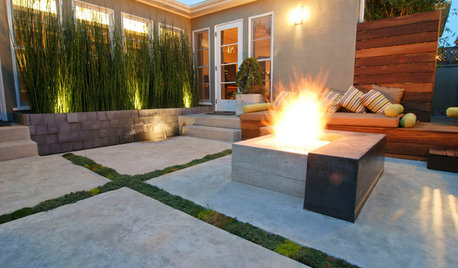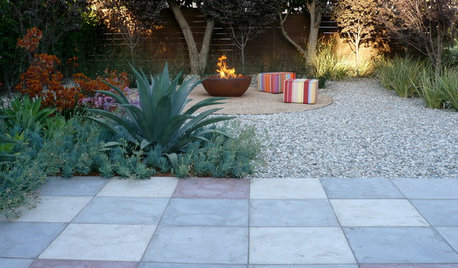HELP! Clay Soil in concrete block raised bed on concrete slab
LouisePace
12 years ago
Related Stories

GARDENING GUIDESGardening Solutions for Heavy Clay Soils
What’s a gardener to do with soil that’s easily compacted and has poor drainage? Find out here
Full Story
GARDENING GUIDESHow to Stop Worrying and Start Loving Clay Soil
Clay has many more benefits than you might imagine
Full Story
GARDENING GUIDES10 Solutions for Soggy Soil
If a too-wet garden is raining on your parade, try these water-loving plants and other ideas for handling all of that H2O
Full Story
FARM YOUR YARDHow to Get Good Soil for Your Edible Garden
The nutrients in your soil feed the plants that feed you. Here are tips on getting it right — just in time for planting season
Full Story
GARDENING GUIDESGardening Solutions for Dry, Sandy Soils
Has your desert or beachy site withered your gardening creativity? Try these ideas for a beautiful, easy-care landscape
Full Story
GARDENING GUIDES8 Materials for Raised Garden Beds
Get the dirt on classic and new options for raised vegetable and plant beds, to get the most from your year-round garden
Full Story
INSPIRING GARDENSFrom Concrete Lot to Gracious Organic Garden in Seattle
Plants, pests and even weeds have a place in this landscape, which offers an edible bounty and a feast for the eyes
Full Story
GREAT HOME PROJECTSHow to Tear Down That Concrete Patio
Clear the path for plantings or a more modern patio design by demolishing all or part of the concrete in your yard
Full Story
MATERIALSPrecast Concrete Pavers Make a Versatile Surface in the Garden
You can use concrete pavers in a variety of shapes and colors for your patio, walkway, driveway and more
Full Story
FARM YOUR YARDHow to Build a Raised Bed for Your Veggies and Plants
Whether you’re farming your parking strip or beautifying your backyard, a planting box you make yourself can come in mighty handy
Full StorySponsored
Franklin County's Custom Kitchen & Bath Designs for Everyday Living
More Discussions








TheMasterGardener1
calistoga_al ca 15 usda 9
Related Professionals
Maple Valley Landscape Architects & Landscape Designers · Aurora Landscape Contractors · Caldwell Landscape Contractors · Canton Landscape Contractors · National City Landscape Contractors · Paramus Landscape Contractors · River Ridge Landscape Contractors · Waltham Landscape Contractors · Woodburn Landscape Contractors · Silver Firs Landscape Contractors · Chatsworth Solar Energy Systems · Rialto Solar Energy Systems · Fishers Window Contractors · Charlotte Fence Contractors · Huntington Beach Fence Contractorstapla (mid-Michigan, USDA z5b-6a)
LouisePaceOriginal Author
tapla (mid-Michigan, USDA z5b-6a)